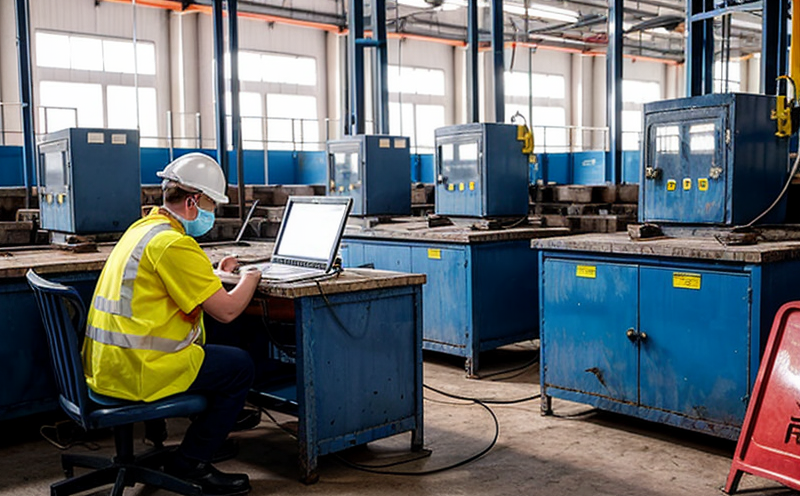ASTM F1506 Flame Resistant Clothing Testing for Factories
The ASTM F1506 standard is specifically designed to evaluate flame-resistant (FR) clothing intended for workers exposed to fire hazards in industrial environments. This test ensures that the garments meet rigorous safety standards, protecting employees from severe burns and other injuries. Flame resistance is a critical aspect of worker protection, especially in sectors like manufacturing, processing, and petrochemicals where fire risks are high.
In factories, exposure to flame can occur due to unexpected accidents or equipment malfunctions. Properly designed FR clothing helps mitigate these risks by providing an additional layer of safety that can prevent or at least reduce the severity of burns. ASTM F1506 provides a standardized methodology for testing the performance of such clothing under controlled conditions.
The test involves subjecting the fabric to specific flame exposure durations and then evaluating its resistance properties, including the time it takes for the material to ignite, the duration it remains alight, and the degree of heat transfer. The results help manufacturers ensure that their products meet industry benchmarks for safety and reliability.
For factories, choosing ASTM F1506-compliant clothing is not just a compliance matter; it's an investment in worker safety and operational efficiency. By adhering to this standard, factories can significantly reduce the risk of fire-related incidents, thereby enhancing overall workplace safety. This proactive approach also helps in maintaining regulatory compliance, which is essential for avoiding potential legal issues and ensuring a safe work environment.
The ASTM F1506 test is applicable to various types of FR clothing used in industrial settings, including coveralls, jackets, pants, and aprons. These garments are typically made from flame-resistant fabrics such as Nomex, Kevlar, or other advanced materials known for their superior heat resistance and durability.
During the testing process, samples are subjected to a series of flame exposures according to standardized protocols. The test apparatus used includes a specially designed burner that simulates real-world fire scenarios. After exposure, the fabric is analyzed for its ability to extinguish itself without being actively quenched and for the amount of heat it transfers during ignition.
The results from this testing are critical in determining whether the material meets the specified performance criteria outlined in ASTM F1506. Compliance with these standards ensures that workers wearing such clothing will have a higher level of protection against fire hazards, leading to safer working conditions and potentially reducing insurance premiums for factories adhering to strict safety protocols.
For quality managers and compliance officers in industrial manufacturing and processing facilities, ensuring the use of ASTM F1506-compliant FR clothing is essential. This proactive approach not only enhances worker safety but also supports adherence to industry best practices and regulatory requirements. By implementing these standards, factories can create a safer work environment that fosters productivity and efficiency.
Industry Applications
The ASTM F1506 Flame Resistant Clothing Testing is widely applicable across various sectors where workers are exposed to fire hazards. Here are some key industry applications:
- Petrochemical plants: Workers in these facilities often handle volatile substances that can ignite easily, making flame-resistant clothing essential.
- Steel mills: The high temperatures and sparks present in steel production environments require robust protection against flames.
- Mining operations: Underground mining can be particularly hazardous due to the risk of fires caused by equipment malfunctions or spontaneous combustion.
| Industry Sector | Main Hazards | Required Protection |
|---|---|---|
| Petrochemical Plants | Volatile substances, accidental fires | Fabric resistant to high temperatures and sparks |
| Steel Mills | High heat, molten metal splashes | Thick, durable flame-resistant clothing |
| Mining Operations | Oxygen-rich environments, spontaneous combustion | Fabric that can withstand extreme conditions |
| Test Parameters | Description |
|---|---|
| Flame Exposure Duration | The length of time the fabric is exposed to flames. |
| Ignition Time | The time it takes for the fabric to ignite after exposure. |
| Duration Alight | The period during which the fabric continues to burn after initial ignition. |
| Heat Transfer | The amount of heat transferred from the flame to the environment. |
Why Choose This Test
Selecting ASTM F1506 Flame Resistant Clothing Testing is crucial for several reasons:
- Regulatory Compliance: Ensures that the clothing meets international safety standards, avoiding potential legal issues.
- Worker Safety: Provides a higher level of protection against fire hazards, reducing the risk of severe burns and other injuries.
- Operational Efficiency: By ensuring compliance with these standards, factories can maintain safe working conditions, which enhances productivity and minimizes downtime due to accidents.
- Cost-Effectiveness: Investing in ASTM F1506-compliant clothing can prevent costly incidents that could lead to extended shutdowns or insurance claims.
The test not only ensures that the fabric meets stringent performance criteria but also provides peace of mind for quality managers, compliance officers, and R&D engineers. By adhering to this standard, factories can demonstrate their commitment to worker safety and operational excellence.
Quality and Reliability Assurance
The ASTM F1506 Flame Resistant Clothing Testing is a cornerstone of quality assurance in industrial manufacturing environments. Here's how it contributes to reliability:
Consistent Performance: The standardized testing process ensures that the fabric consistently meets the specified performance criteria, regardless of the manufacturer or batch.
Longevity and Durability: By adhering to these standards, factories can expect their FR clothing to provide reliable protection over an extended period. This is particularly important in high-risk environments where clothing must endure frequent use and harsh conditions.
Expertise and Equipment: Our laboratory uses cutting-edge equipment and follows precise protocols to ensure accurate and reproducible results. This level of expertise guarantees that the testing process is reliable and trustworthy.
Continuous Improvement: The test results provide valuable insights into the performance of FR clothing, allowing manufacturers to make continuous improvements in fabric design and manufacturing processes.





